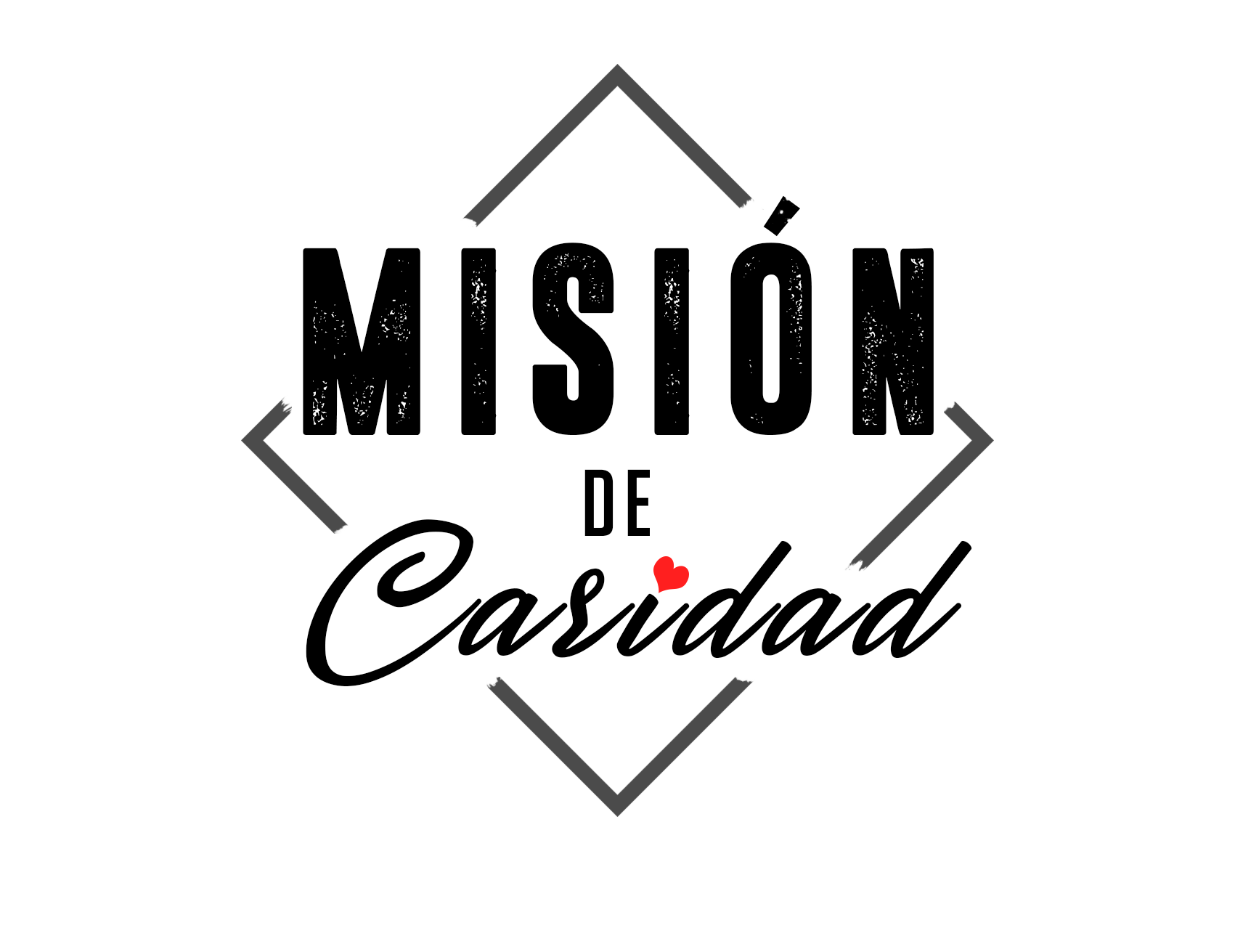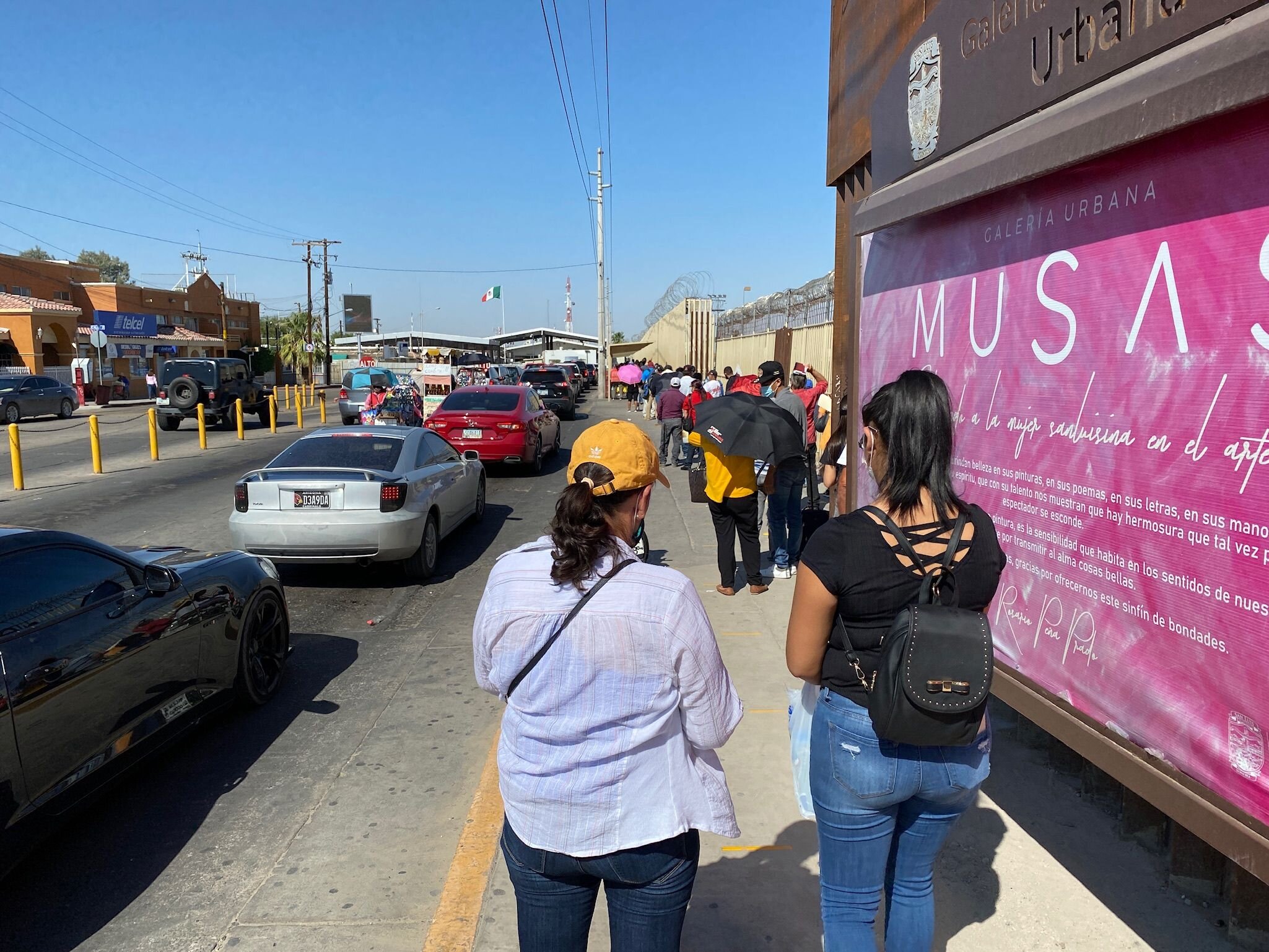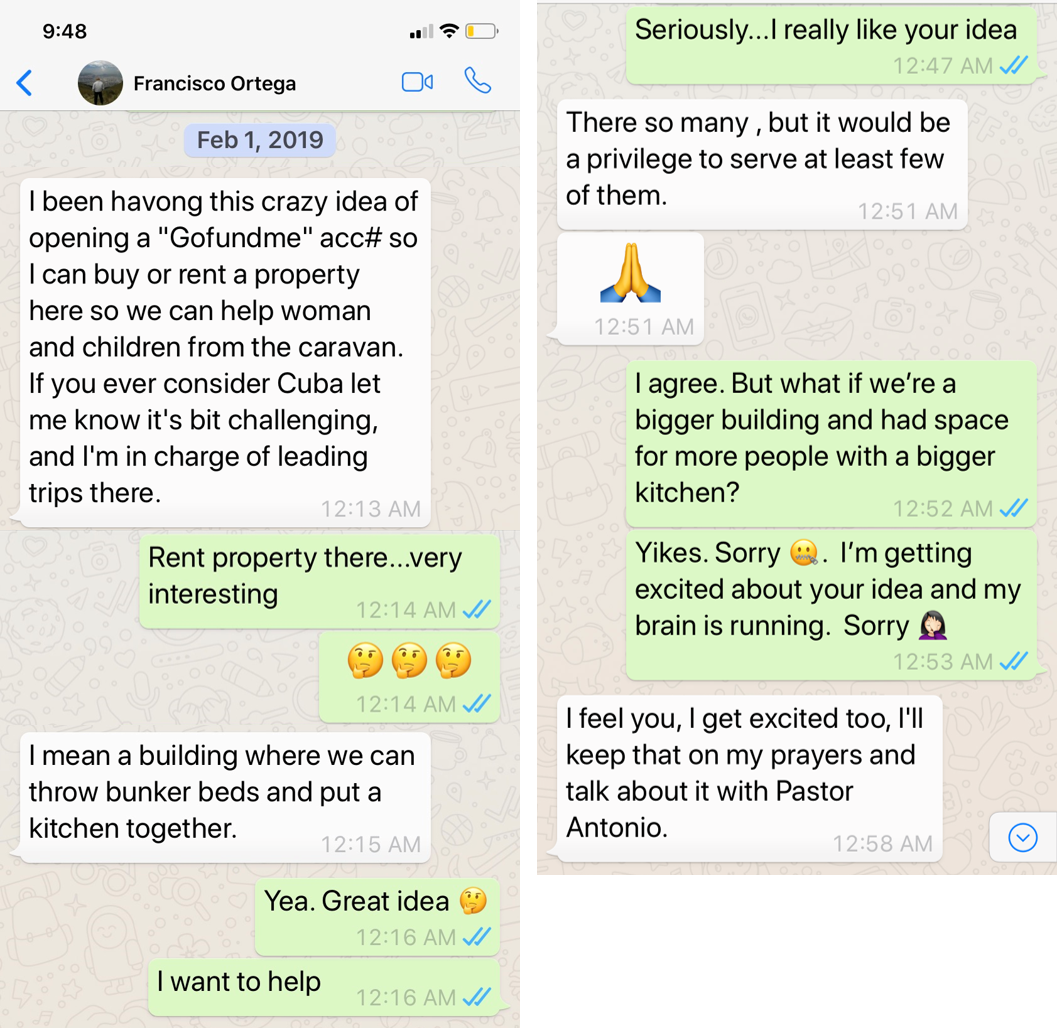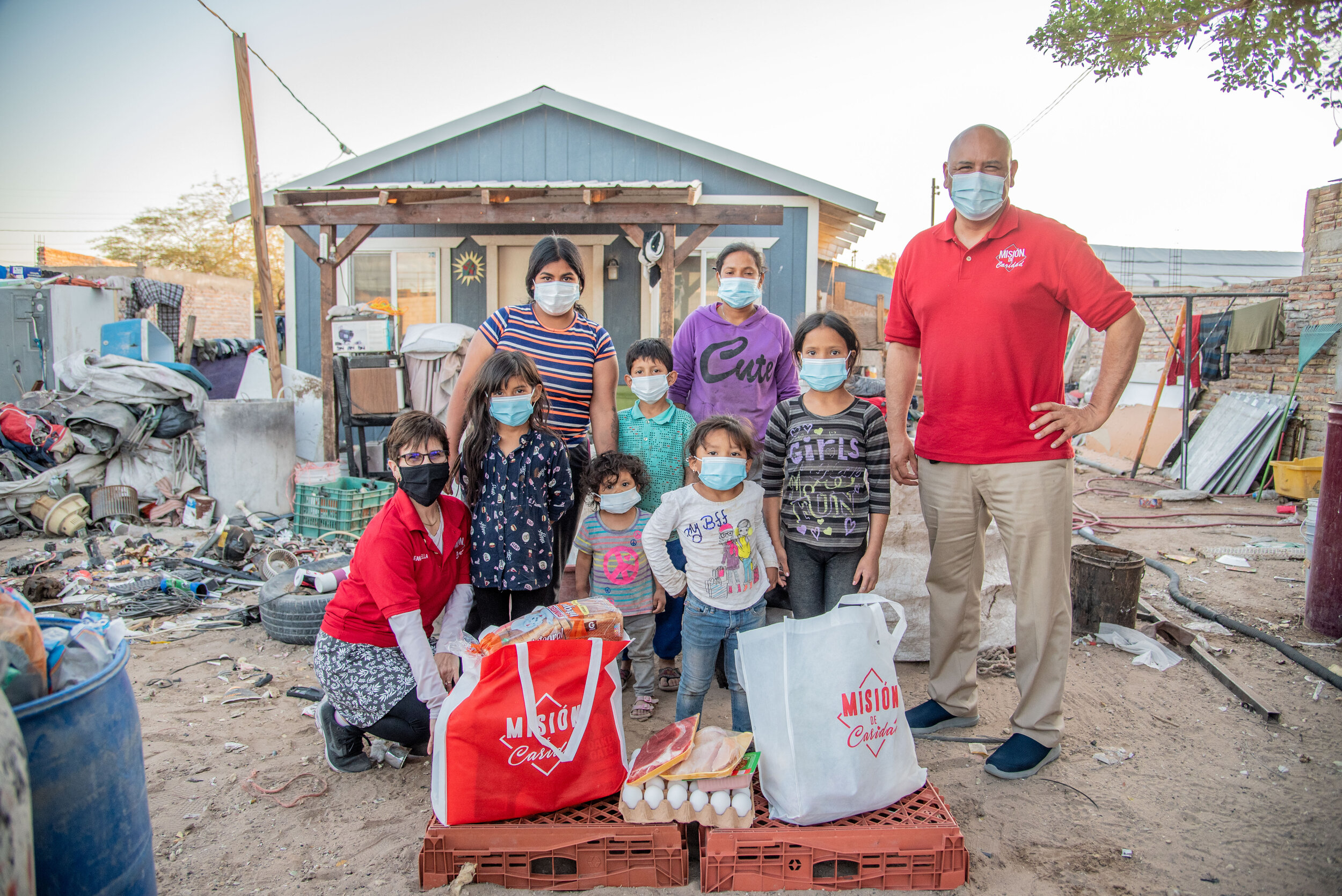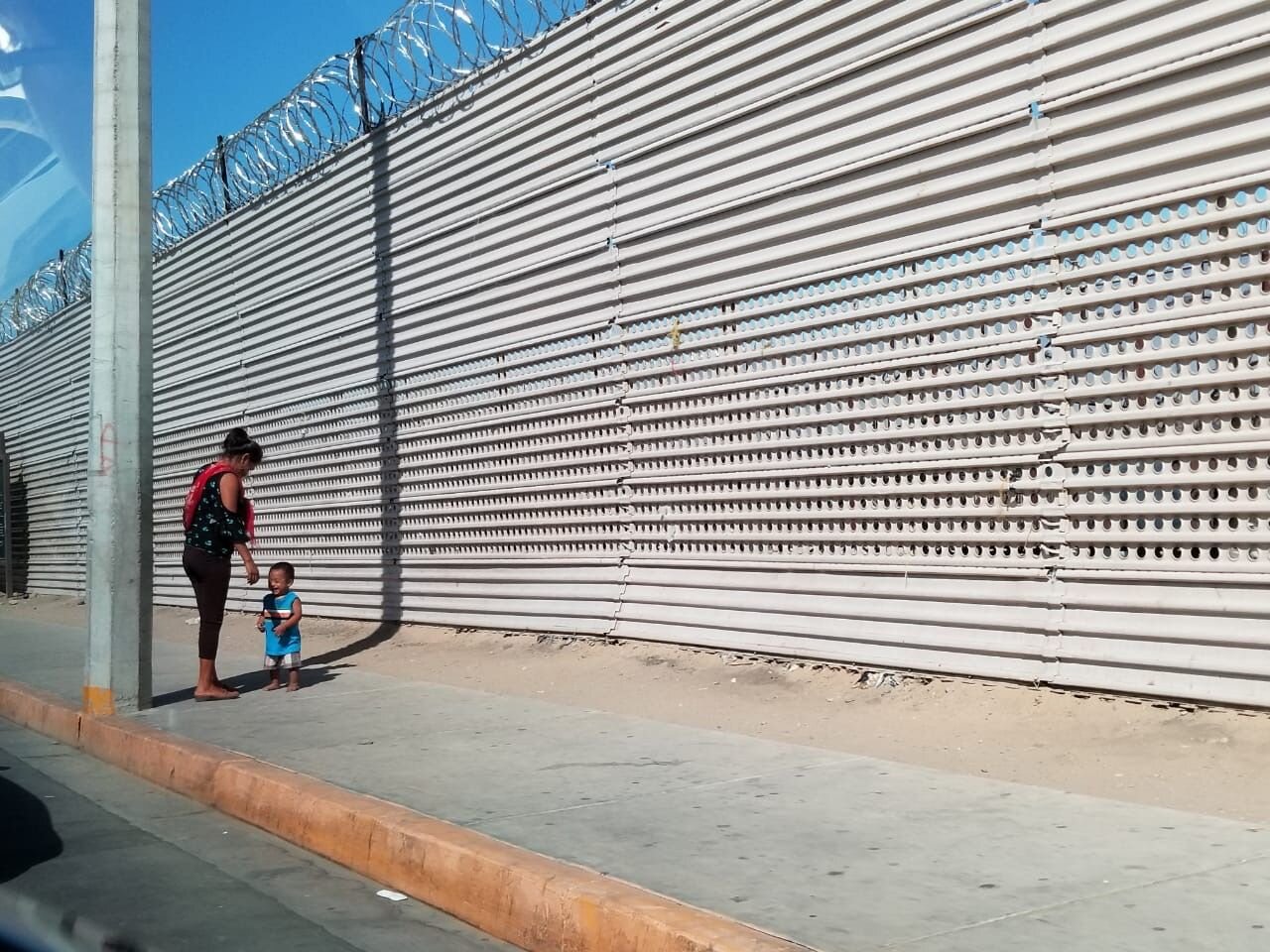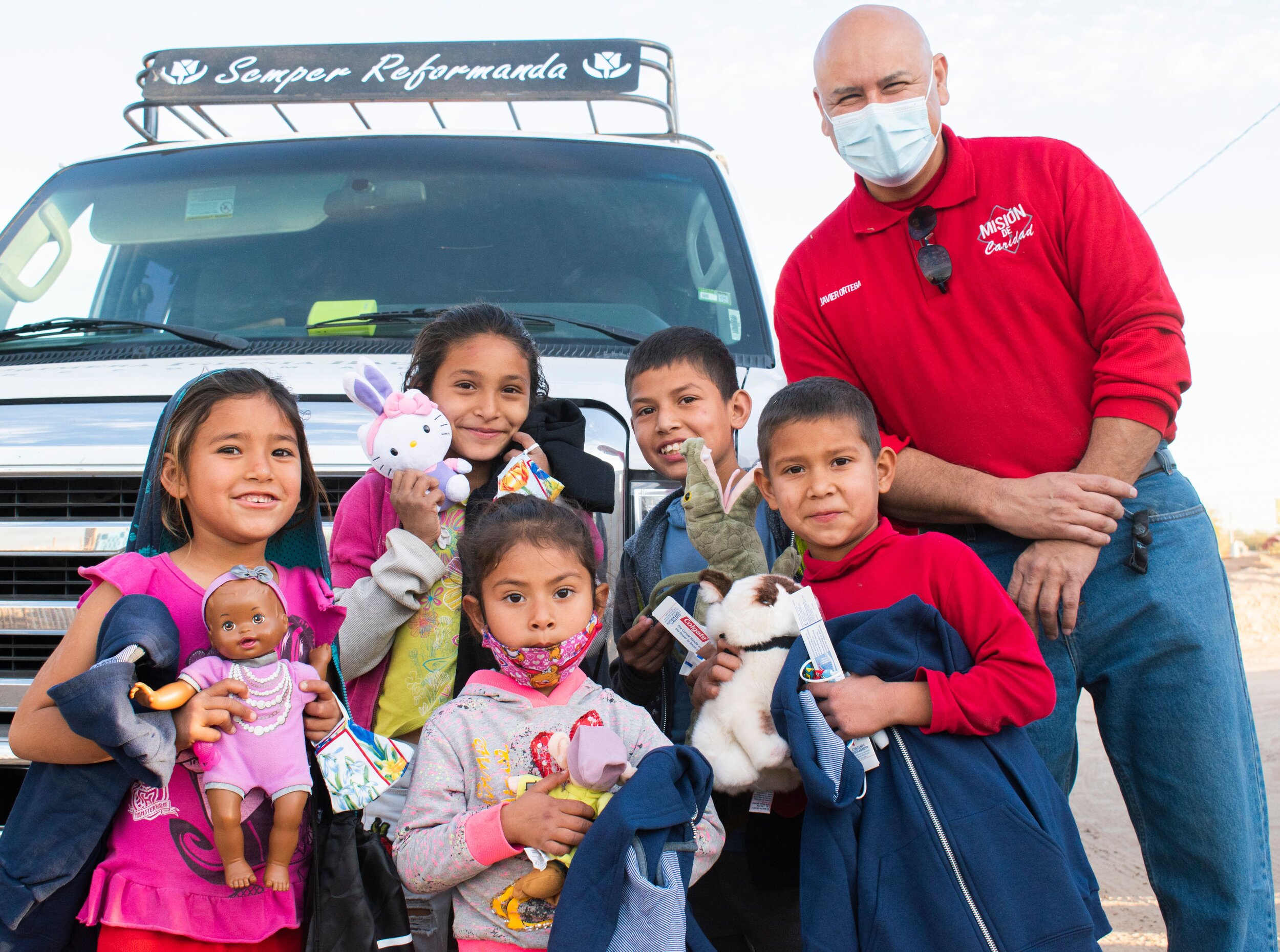Loving the Poor and Displaced on the Border: An Interview with Co-founder Francisco Ortega
We sat down recently with the co-founder of Misión de Caridad, Francisco Ortega, to hear about his experiences growing up in a border town in Mexico and how it all led to where and who he is today. He shared about recent developments along the border as well as what it means to love his neighbor in San Luis Rio Colorado, Sonora Mexico.
Francisco Ortega grew up at the US-Mexico border and now serves the poor and displaced who come to San Luis Rio Colorado in search of a better future.
What was it like growing up along the U.S.-Mexico border as a child?
So many things were different for us as kids along the border. When we were kids, we used to cross the border like it was nothing. We would play ball with kids on the other side. Sometimes if we wanted to have good ice cream we just crossed the border. If the border patrol saw us, they just kicked us out [laughs].
Sounds like it was a very different time!
It really was. We developed our own border culture there - American Mexican culture. It’s the other way around for us, America’s influence in Mexico. Back then it was easy to cross the border. It was as simple as stepping over a fence, sometimes we crossed walking backwards through the crossing or just walked forward and nobody noticed. My parents and siblings were all born in Mexico, but then migrated to the US and had residency there. My brother and I were already adults when they were approved, so we could not get legal status, but almost all of my nieces and nephews were born in the States.
However, when I was 23, I moved to the States and worked in a manufacturing plant in the produce industry. I moved back and forth between California and Arizona, as many migrant workers do during the produce season. For 12 years I did that and finally I ended up living on the East coast for 4 or 5 years.
Francisco lived in the USA for more than 15 years before following God’s call to return to Mexico.
So you actually lived in the US for quite a few years. What made you decide to leave?
When I found myself in DC, I wanted nothing to do with God. I was into work and buying things for myself. Then I was promoted to be manager at my job and at that time I needed so much encouragement in order to perform the job. I ran into some preaching over the internet and for some reason, God put it in my heart to start praying everyday. I had never denied that God existed, even though I didn’t understand the gospel. But something happened. And even though it wasn’t my intention to change my life, God gave me the grace to keep on listening to the Word of God.
I heard the gospel in a way that I never had before and that's when it all made total sense to me. I believed and after some time I felt that God was calling me to make a radical change in the way I was living my life. I became convinced that it was God's will for me to return to Mexico and that's when God gave me the grace to do His will.
Francisco distributes water bottles at a local shelter for asylum seeker families
So after working in the US for more than 15 years, you left this job behind to return to Mexico?
Yes, and nobody could understand why. It was really hard to explain that I wanted to do God’s will, even if it meant leaving this great job and the United States behind.
What was it like transitioning back to Mexico?
It was like a new life to me. I had been gone 20 years. None of my friends were here anymore as most people born at the border end up living in the US, legally or illegally. So, I started serving the Lord. I attended church and even attended and graduated from seminary. I became co-Pastor of a church and also had a part time job leading short term mission trips. I traveled around Latin America leading teams from the States using my Spanish and English skills. That is how I met Jean back in 2016.
Francisco and Jean prepare to distribute healthy groceries as part of MdC’s Feed-A-Family program
For those of us who have never heard the story, how exactly did you meet Jean?
Jean came on a mission trip as part of Highrock Covenant Church. She was one of the leaders and I was the trip coordinator as well as one of the elders of the local church. Jean came with the team and that’s how we first met. After that, she and her family continued visiting and maintained a relationship with me and our church.
In 2019, we were experiencing a lot of migrant flow to the border because of the caravans. There was a camp of people living right by the border. They used to set up their tarps and blankets against the border fence. I drove by there many times and saw them there in the cold of winter. Most of the people were women and children, travelling alone, who were fleeing dangerous situations and violence and waiting to seek asylum in the U.S. It was so sad, it was hard to look.
Women and children living in makeshift homes at the border
In April 2018, the Trump administration ordered a practice called “metering” across all Mexico ports of entry to the US. This practice restricted the number of people allowed to seek asylum at the border each day. Instead, asylum seekers were put on long “waitlists” and forced to remain in Mexico until their number was called. As a result, many women and children were stuck at the border living in unsafe conditions.
On a typical day at the San Luis Rio Colorado border crossing, there are long lines of people waiting to cross — migrant workers and others that are employed in the US, students attending school in the US, residents of Mexico shopping, conducting business, visiting family, or vacationing in the US and many others.
I have always had the heart to help because…, you know, when God changes your heart, it is in a way that is different from before you understood the gospel. Also, when I was a kid, I always received support from other people. I grew up in a poor family, so I developed this same gratitude that pushes me to show compassion to others in the same situation like when I was a child.
How did all this lead to MdC?
So in one of my conversations with Jean in February of 2019, I told her that I wanted to do something and I think I had barely finished my sentence that I wanted to start a Go-Fund-Me before she was already typing “I want to help.” So that’s how MdC was born. At first it was just a small project to help women and children. We saw that they didn’t have any services here and we knew that they were struggling. But now we are running this wonderful organization which is growing much more than we expected.
Misión de Caridad has served more than 600+ families at the border
Who are the amazing volunteers that help you with food distribution and other work?
Basically my whole church is involved. But also people from the Christian circles in our community, the people that have this altruistic heart. And it was kind of automatic, once people learned that I was going to set up an organization to serve our neighbors, everybody wanted to join.
Is this a common thing that you would find in Mexico?
Among Christians, I think it is. People are willing to surrender their time and their service in order to love their neighbor.
Misión de Caridad relies on dedicated volunteers to carry out its programs in Mexico.
Watch Francisco and our team at work in Mexico!
Many Americans see Mexico as a place where immigrants come from. But Mexico has received plenty of migrants over the years. Can you tell us more about the immigration situation in Mexico?
The immigration situation has so many faces here. Most people come here in order to go to the USA. So we are like the back door. But in recent years, the claims for asylum in Mexico has risen dramatically. now, so many people are fleeing to Mexico not necessarily to end up in the USA. We are also receiving people who have been released (deported) to Mexico.
It’s always changing. One day you see nothing but Venezuelans in the streets. Then you see Guatemalans. Some people plan to travel together. Nowadays they take advantage of technology. They used to travel together in caravans but somehow it didn’t work out for them. So now, they plan the day they will each leave, they monitor each other as they travel separately and they arrive at the border together. That’s a new thing.
But yeah it’s very complex and obviously the border is like a war zone. Many of the migrants, they face abuses in so many forms. Mexican authorities abuse their power, they know they come from far away. Some of them have cash and they get exploited by the Mexican authorities, the cartels, the gangs, the human traffickers. So there’s many enemies for a migrant to face coming into Mexico. And it’s really sad. Most of these people do not make it to the US and get released back to Mexico. They end up here, stuck here, they travel from one border town to another continuing to try to make it to the US.
What are some recent developments at the border?
When the new administration took office in the US, the cartels and gangs started telling people it was really easy, that it is an automatic thing to get into the US and seek asylum. So people believed that. They had false expectations. They sold everything that they had. In Latin America, they were thinking it was going to be easy for them now after all these years. So people started coming in masses to the border just to find out that it was not that easy. And for some of these people, it’s not an option to go back to their home country because they have nothing there.
And in every border city it’s different. For example, most of the people here in San Luis crossed the border at other crossing points. So in order to make it difficult for them to cross again, the border patrol releases them at a different crossing from where they crossed initially. So a lot of people come here, they don’t know anybody, don’t know how it works here, and very soon they leave back to where they originally crossed.
“Even when these people try to work the right way back in their hometown, the cartels extort them. So they flee because they cannot afford to pay the cartels anymore.”
You mentioned before that many of the people who stay on in San Luis Rio Colorado are from other parts of Mexico looking for a better life, not refugees from other countries.
Yes. They also represent large groups of people who end up at the border. Many of them are fleeing violence. We know many people who cannot stay in their hometowns anymore because the cartels are taking over many parts of Mexico and the government can do almost nothing. So they come here because even when these people try to work the right way back in their hometown, the cartels extort them. So they flee because they cannot afford to pay the cartels anymore. And if they don’t pay, really bad things will happen. They [the cartels] kill.
Misión de Caridad helps families who live at the border, whether they are locals, refugees, immigrant, or internally displaced.
Why do these people get less attention than refugees?
Internally displaced people (IDPs) don’t qualify to be in the international eye because they are not refugees. These people are fleeing violence and they are Mexican citizens, but they are less educated compared to most of Central American or international migrants. Most barely know how to read and barely finished their primary grades. Their only option for work in a tough job like agriculture in Mexico for very low pay. For example, many of those we see earn less than $100 per week, and most even less than $50. Most of them don’t have any intention of going to the US. They see the difference between living in Southern Mexico and living at the border as an improvement. One of the advantages we have here is that living wage at the border is double that of the rest of the country.
But yes, these people are not on the international radar and they want anything from the United States and even the Mexican government doesn’t care about them.
Eileen, 26, fled her home in Southern Mexico after a local cartel raised the illegal tax on her family’s restaurant business. She now lives in a small concrete building just a few feet away from a busy highway in San Luis Rio Colorado. To read her story, click here.
“Most of them don’t have any intention of going to the US. They see the difference between living in Southern Mexico and living at the border as an improvement. ”
What differences do you see between how refugees and people from other parts of Mexico are treated?
Those from other parts of Mexico get adapted more quickly to local environment because they speak the same language and culture. Maybe there are some differences but they are minor. For example, one of our volunteers who works with us came with her family from Sinaloa. At first we kept our distance because Sinaloa is well connected to the drug trade and narco culture. However after some time, we could see that they were in a very vulnerable situation. We see no difference, but at first they faced discrimination from locals here.
Most of them form their own communities. On the other hand, most of the international refugees stay in shelters.
The inside of a shelter in a bordering town
Children sleeping on a makeshift bed at a shelter
What trends are you noticing right now in terms of refugees at the border?
The same. We are getting people from Honduras and Guatemala and Cuba. We are seeing more and more from Cuba for some reason. But there are so many Hondurans right now, they stay in the streets, stay together in a hotel, or stay in a shelter. But they can only stay in the shelters for a couple of days.
There was a story of a girl I went to visit. She was in one of the shelters that we visit. This girl crossed the border into the US claimed asylum 10 days ago. They were intercepted by border patrol. She was already more than 8 months pregnant. And so when they got intercepted by border patrol, she didn’t feel well and she asked for medical assistance from the border patrol. Not to say bad things about them because most of the stories that you hear are positive; they are professionals and they care about people, even though they work in a system that is not in the best shape. But for some reason in this particular case this Honduran woman was feeling bad and she was more than 8 months pregnant. It was at least 110 degrees last week and she ended up losing both babies. It is stories like those that are heartbreaking.
So it’s a mixture of new people coming from other countries, other parts of Mexico and people being released back to Mexico, who crossed from other crossing points, like Texas for example. They get here and they disappear really quick. But I think that sometimes they leave soon because they don’t see any opportunity.
“I want to see children who are not in the best shape grow up and aim for a better future.”
That’s our work at MDC. We find those willing to start a new life at the border and who have given up on returning to their countries. Our primary goal is to have an impact on the people we serve, especially on women and children. I want to see these children who are not in the best shape grow up and aim for a better future.
Sources:
American Immigration Council, 2021. “Metering and Asylum Turnbacks”. Retrieved on July 27th, 2021 from https://www.americanimmigrationcouncil.org/research/metering-and-asylum-turnbacks
Fronteras Desk, 2019. “Tracing the Migrant Journey: on the ground in San Luis Rio Colorado, Mexico”. Retrieved on July 27th, 2021 from https://fronterasdesk.org/content/1124011/tracing-migrant-journey-ground-san-luis-rio-colorado-mexico
Fronteras Desk, 2019. “On the border in San Luis, asylum seekers from around the world wait months”. Retrieved on July 27th, 2021 from https://news.azpm.org/p/news-topical-border/2019/9/13/158094-on-the-border-in-san-luis-asylum-seekers-from-around-the-world-wait-months/
Mundo Hispanico, 2021. “A pregnant Honduran immigrant was deported by the Migra and lost her twins”. Retrieved on July 27th, 2021 from https://en.mundohispanico.com/pregnant-honduran-immigrant-deported-lost-her-twins/
Eunice Wong is the manager of blog content at Misión de Caridad. Her love for telling refugee stories began while working for UNHCR, Christian Aid, & PichaEats. When not dreaming up new story ideas, she can usually be found singing or enjoying a cup of coffee.
